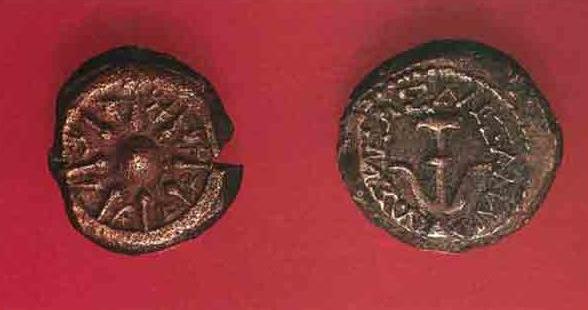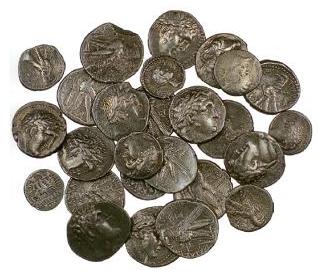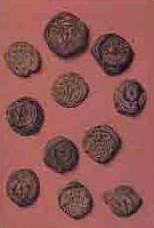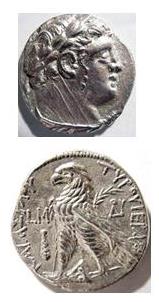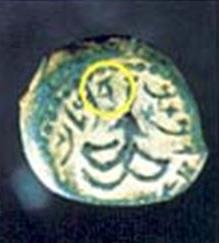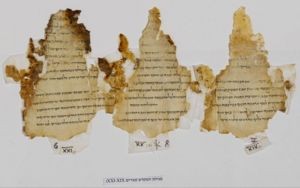Home » Bible and Beyond » Maccabean Period
Maccabean Period
Did the earliest Gospels use Hebrew letters for the Tetragrammaton? Many early copies of the New Testament abbreviate sacred words (nomina sacra). The earliest of these abbreviations stand for “God,” “Lord,” “Christ,” and “Jesus.” Abbreviations of these words were formed by writing their first and last letters and placing a line over them. Thus, using […]
Did Solomon’s temple contain a seven-branched lampstand known as a menorah? Most people answer this question with an automatic “of course.” But the Biblical text is not so clear. The Bible describes the building of the Temple itself in great detail (1 Kings 6–7). The furnishings of the Temple are also described in somewhat less […]
Alexander Janneus Coin About 60 percent of the recovered coins from the excavations at Gamla are Jewish coins such as these, minted during the reign of Alexander Janneus (103–76 B.C.E.). Between the spokes of the eight-rayed star on the obverse, at left, a paleo-Hebrew inscription says, “Yehonatan the king,” using Janneus’ Hebrew given name. At […]
Found in 1955, 561 silver coins found in three intact ceramic vessels by Pere Roland de Vaux. Shown are twenty-four Tyrian shekalim and half-shekalim minted between the years 103/102 and 10/9 B.C.E. Ayala Sussman, David Underwood, Ruth Peled. Scrolls from the Dead Sea. New York- George Braziller 1993.
Bronze Hasmonean Coins Bronze Hasmonean coins, dating to 103–37 B.C.E., bear inscriptions in paleo-Hebrew script. “Glossary- From Shekels to Talents- Money in the Ancient World,” BAR, Sep-Oct 1993.
Bronze coin of Matthias Antigonus. 40-37 BCE. Bronze (IAA 22147). Hurviz, Gila. The City of David, Discoveries from the Excavations. Hebrew University of Jerusalem, 1999, p. 52.
87/86 B.C.E. First Temple Tax Coin Material- Silver Denomination- Half-Shekel Size- 8/10 inch in diameter In the mid-second century B.C.E., the Hasmoneans formalized the payment of an annual Temple tax based on the requirement in Exodus 30-13 that “Each one… is to give a half shekel, according to the sanctuary weight… This half shekel is […]
Paleo-Hebrew Coin Paleo-Hebrew he is clearly visible on the Hasmonean coin, where it is circled in yellow. “Defusing Pseudo-Scholarship- No Trained Epigraphist Would Confuse the Two,” BAR Mar-Apr 1997.
On August 1, 1960, I received a letter from a man who identified himself as a Virginia clergyman. The letter stated that the writer was in a position to negotiate the sale of “important, authentic discoveries of Dead Sea Scrolls.” Obviously, he contacted me because of my intimate involvement in Israel’s acquisition of the original […]
Some Essenes may have survived almost 1000 years after Qumran The preceding article described the discovery, 50 years before the Dead Sea Scrolls were found, of what has been dubbed the “First Dead Sea Scroll.” It was found in Cairo in 1897 and became known to scholars as the Damascus Document. Fragments of other earlier […]



